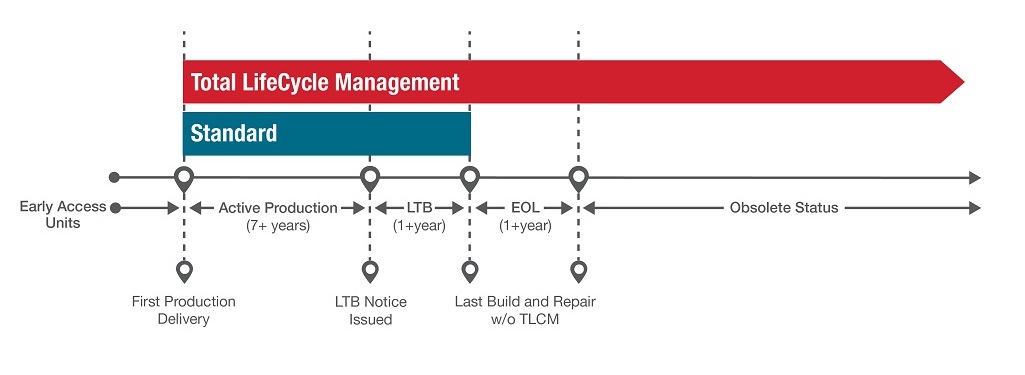
FPGAs are increasingly being used in deployed radar, signal intelligence and electronic warfare applications due to their flexibility and ability to perform large amounts of parallel digital signal processor processing. While FPGA technology increases in capability every two to three years, the programs that use FPGA products may maintain a specific configuration of hardware for more than 20 years. Since FPGAs are reconfigurable and their programming can be updated in the field, this longevity can be extended as long as product can be built and/or supported.
FPGA vendors such as Xilinx understand a long component life is important and generally support production of their devices for approximately 15 years. In applications like radar, signal intelligence, and electronic warfare, even 15 years may not be long enough for some programs. On top of these long program lifecycles, there are many other components on an FPGA module. While commercial-off-the-shelf (COTS) solutions offer a more cost-effective option for programs, program managers are often left trying to bridge the gap between the component lifecycle and the program lifecycle.
Memories are notorious for going obsolete every few years, and other components such as clock devices or power supply devices may go obsolete before the actual FPGA. This means lowering program risk has become increasingly challenging at a time when it matters most.
In all cases, for a long term program there needs to be a proven mechanism in place to ensure a product can be provided for as long as it is needed.
Over decades of supporting thousands of programs, Curtiss-Wright Defense Solutions has established a mature and robust process with the sole purpose of addressing the long-term needs of customers, and has successfully supported numerous 15 to 20+ year programs. The Total LifeCycle Management (TLCM) offering can extend the life of a product as long as required based on the forecasted needs. Most importantly of all, this capability includes an internal department dedicated to tracking the lifecycle of all components to proactively address pending shortages and help give program managers the peace of mind they deserve.

To learn more about our lifecycle management for COTS boards, visit our Total LifeCycle Management (TLCM) section here.